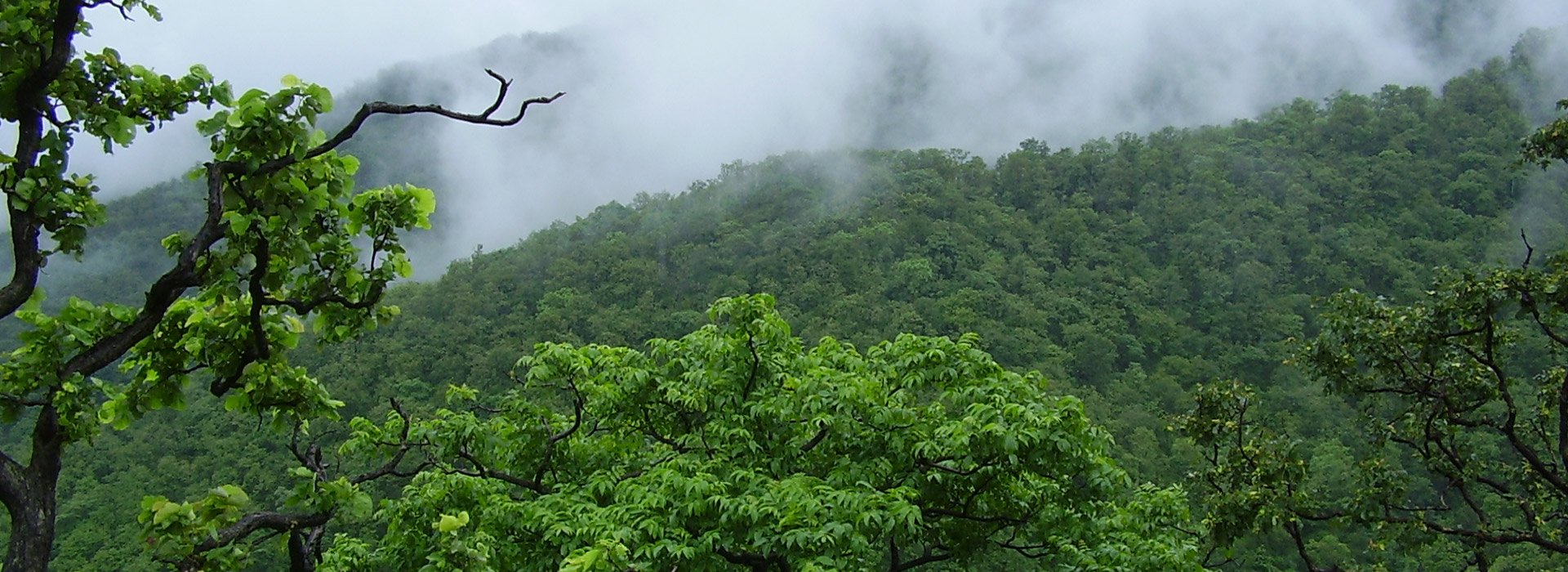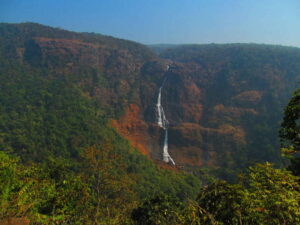Similipal Tiger Reserve: A Journey into the Wilderness of Odisha
Introduction of Similipal Tiger Reserve
Similipal Tiger Reserve is a pristine gem nestled in the heart of Odisha, India, renowned for its breathtaking natural beauty and rich biodiversity. Spanning over 2,750 square kilometers, it is one of the largest tiger reserves in the country and an essential part of the Project Tiger initiative. The reserve is a sanctuary for a variety of wildlife, including the majestic Bengal tigers, elephants, leopards, and many other species of flora and fauna. With its dense forests, picturesque waterfalls, and diverse ecosystems, Similipal is not just a wildlife reserve, but a natural paradise that attracts nature enthusiasts, photographers, and conservationists alike. Its rich cultural heritage and ecological significance make it a must-visit destination for anyone seeking to connect with nature and experience the untamed beauty of India.
History of Similipal Tiger Reserve
The Similipal Tiger Reserve, located in the Mayurbhanj district of Odisha, has a rich and fascinating history that reflects the region’s deep connection with wildlife conservation and its role in India’s efforts to protect endangered species, particularly the Bengal tiger.
Early Beginnings: A Sanctuary for Wildlife
 The history of Similipal as a protected area dates back to the early 1970s, when the government of India initiated efforts to conserve the rapidly dwindling tiger population. Prior to becoming a tiger reserve, the region was part of the Similipal Wildlife Sanctuary, established in 1973. The sanctuary’s creation was part of the larger national movement to protect wildlife across India, following the recognition of the Bengal tiger’s vulnerable status.
The history of Similipal as a protected area dates back to the early 1970s, when the government of India initiated efforts to conserve the rapidly dwindling tiger population. Prior to becoming a tiger reserve, the region was part of the Similipal Wildlife Sanctuary, established in 1973. The sanctuary’s creation was part of the larger national movement to protect wildlife across India, following the recognition of the Bengal tiger’s vulnerable status.
The sanctuary was originally designated as a forest reserve in 1956. However, it was the establishment of the Similipal Wildlife Sanctuary in 1973 that marked the beginning of serious conservation efforts, setting the stage for the region to evolve into a significant conservation area.
Joining Project Tiger: A Step Towards Conservation
In 1973, India launched Project Tiger, an ambitious nationwide effort aimed at conserving Bengal tigers, whose numbers were rapidly declining. Similipal was selected as one of the first areas under this project due to its abundant tiger population, extensive forest cover, and ideal habitat conditions. This marked a crucial moment in the history of Similipal, as it became an important part of India’s conservation strategy for protecting the tiger species.
In 2007, Similipal was formally designated as a Tiger Reserve, expanding its role within Project Tiger and reinforcing its status as a priority conservation area. This transition aimed at improving tiger conservation and the protection of the broader biodiversity within the reserve. Under this designation, Similipal has received increased protection and resources to maintain its role as a critical tiger habitat.
Biodiversity and Conservation Efforts
Similipal Tiger Reserve is not just known for its tigers, but also for its rich and diverse flora and fauna. The reserve’s forests are home to a variety of species, including elephants, leopards, wild boars and numerous bird species, along with a wealth of plant life. The dense forests, deep valleys, and cascading waterfalls like Joranda Falls and Barehipani Falls create a unique environment for wildlife to thrive.
The reserve has also become a crucial breeding ground for endangered species and plays an essential role in biodiversity conservation. Over the years, several initiatives have been introduced to ensure the protection of Similipal’s wildlife such as anti-poaching squads, habitat restoration programs, and regular wildlife monitoring.
Cultural Significance
Similipal’s history is intertwined with the culture of the local communities that inhabit the area. The region is home to several indigenous tribes, such as the Santhals, Ho and Munda tribes who have lived harmoniously with nature for centuries. These communities have deep cultural ties to the forests and have historically relied on the resources of Similipal for their livelihood.
While conservation efforts have been crucial, the challenges of balancing the needs of local tribes and the protection of wildlife have been ongoing. However, efforts are continually made to ensure that tribal rights are respected while promoting environmental conservation.
Recent Developments and Challenges
Similipal has faced several challenges in recent years, including threats from illegal logging, poaching and encroachment. The reserve’s management authorities however have worked tirelessly to combat these issues through the deployment of trained personnel, community involvement and strict law enforcement.
Additionally, climate change has posed new challenges to the reserve’s delicate ecosystem. Deforestation and forest fires in certain areas have threatened the habitats of several species. However continuous monitoring and the active involvement of local communities in conservation have helped mitigate these threats.
Geography and climate
The National Tiger Conservation Authority estimated that there were just 2,967 tigers left in India as of 2018.
According to the 2010 National Tiger Assessment there are 1,706 tigers in India as a whole. According to the Ministry of Environment and Forests, India’s tiger population increased by 30.5% from the 2010 estimate to 2,226 in 2014.
This thorough analysis revealed that tiger populations have remained healthy in more protected tiger source areas, particularly tiger reserves. The territory that tigers historically called home has significantly shrunk outside of protected zones. As shown by this illustration, tigers need corridors to travel between source sites.
Flora and Fauna
 Similipal is not just about tigers—its diversity in wildlife is astonishing. The reserve hosts more than 50 species of mammals, including elephants, sambar deer, barking deer, and the rare gaur (Indian bison). Visitors are also likely to spot other species like the Indian muntjac and wild boar.
Similipal is not just about tigers—its diversity in wildlife is astonishing. The reserve hosts more than 50 species of mammals, including elephants, sambar deer, barking deer, and the rare gaur (Indian bison). Visitors are also likely to spot other species like the Indian muntjac and wild boar.
The avian life here is equally rich, with over 230 species of birds, including the Indian hornbill, black-headed oriole, and crested serpent eagle. The varied topography and vegetation types within the reserve provide perfect habitats for both migratory and resident bird species.
The flora is equally diverse, with the Similipal forest boasting a wide range of tropical deciduous trees, including sal trees that are dominant in the region. The forest floor is also rich in medicinal plants, making it an important spot for botanical research.
The Waterfalls
 Similipal is famous for its picturesque waterfalls, which add to the charm of the reserve. Some of the popular waterfalls include:
Similipal is famous for its picturesque waterfalls, which add to the charm of the reserve. Some of the popular waterfalls include:
- Joranda Waterfall: The tallest waterfall in Odisha, with a height of around 150 meters, Joranda offers a breathtaking view. Surrounded by dense forests, the waterfall’s pristine beauty is a major highlight for visitors.
- Barehipani Waterfall: This is the second-highest waterfall in the state, cascading down from a height of about 130 meters. The view of the waterfall, particularly during the monsoon season, is simply mesmerizing.
These waterfalls not only contribute to the beauty of Similipal but also play a critical role in supporting the local ecosystem.
Eco-Tourism in Similipal
Similipal Tiger Reserve is a well-known destination for eco-tourism, offering opportunities for wildlife safaris, trekking and bird watching. Visitors can embark on guided tours that take them deep into the forest, giving them a chance to observe the rich wildlife and the stunning natural surroundings.
Wildlife Safaris: Jeep safaris are the most popular way to explore the reserve, especially for spotting tigers and other animals in their natural habitats. While sightings can’t be guaranteed, the experience of being in the midst of such rich biodiversity is unforgettable.
Trekking and Hiking: For those seeking adventure, trekking through the dense forest trails offers a chance to immerse oneself in the true wilderness of Similipal. Popular trekking routes take visitors to high points within the reserve, providing panoramic views of the surroundings.
Bird Watching: With its rich avian diversity, Similipal is a birdwatcher’s paradise. The reserve offers numerous opportunities to spot both rare and common species, particularly along its water bodies.
Best Time to Visit
The ideal time to visit Similipal Tiger Reserve is from November to June, avoiding the monsoon season when the area experiences heavy rainfall. However, visiting during the monsoon also has its charm, with the waterfalls in full force and the forests lush and green.
Conservation Efforts
The Similipal Tiger Reserve has been at the forefront of tiger conservation in India. The reserve has seen successful initiatives in maintaining and increasing tiger numbers through anti-poaching measures, habitat restoration, and scientific monitoring. Additionally, local communities play an important role in the conservation efforts by engaging in sustainable practices and eco-tourism.
How to Reach Similipal Tiger Reserve
Similipal Tiger Reserve is located about 200 km from Bhubaneswar, the capital of Odisha. The reserve is easily accessible by road from nearby towns like Baripada, which is around 40 kilometers away from the reserve’s entrance.
- By Air: The nearest airport is in Bhubaneswar.
- By Train: The nearest railway station is Baripada, which is well connected to major cities like Bhubaneswar.
- By Road: Regular buses and private taxis operate from Bhubaneswar to Similipal, making it convenient for travelers to reach the reserve.
Timetable for Similipal Safari:
Normally seen guests: 6:00 AM to 12:00 PM,
Upon request, from 6:00 AM to 2:00 PM.
Hours for the Tiger Reserve Entry Pass Counter: 6:00 AM to 9:00 AM.
Address : Mayurbhanj Odisha- 757002
Website of official interest: https://www.similipal.org
For more information about different tiger reserve please visit:-https://yesnearme.com/news/
THANK YOU……….







Recent Comments